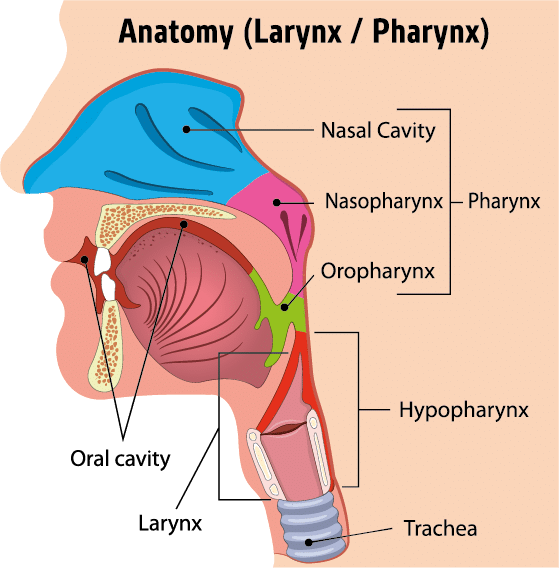TREATMENT
Laryngectomy
TREATMENT
Laryngectomy
What is a Laryngectomy?
Laryngectomy is a surgical procedure that involves the partial or complete removal of the larynx (voice box). This procedure is often necessary to treat laryngeal cancer or severe damage to the larynx. The primary goal of a laryngectomy is to remove cancer from the voice box while restoring swallow function and voicing using a prosthesis. Although individuals who undergo a laryngectomy will need to learn new ways to breathe, speak, and swallow, they can still enjoy a good quality of life with the assistance of their medical team.

Pre-Surgery Preparations
Before undergoing a laryngectomy, several steps are taken to ensure the best possible outcome. This includes a biopsy, imaging, and staging workup to assess the extent of the condition. Additionally, preoperative medical clearance and specialty consultations will be required. A consultation with the surgeon and a speech and language pathologist (SLP) is also essential to discuss post-operative expectations for recovery and return to function.
Surgical Procedure
During a laryngectomy, part or all of the larynx is removed. This results in the creation of a permanent stoma, a hole in the neck, which connects the trachea to the neck skin. As a result, individuals who undergo a laryngectomy will no longer breathe through their mouth and nose, becoming total neck breathers. In some cases, more advanced reconstructive surgery may be necessary to rebuild the throat.
Post-Operative Care
Following a laryngectomy, patients typically stay in the hospital for 5-10 days to monitor healing, with some of that time spent in the ICU. A swallow study may be conducted once the neck and throat have completely healed, which usually takes 1-3 weeks. Until then, alternative forms of nutrition are provided to ensure adequate nutrition before patients are able to swallow by mouth.
Potential Complications
Complications specific to laryngectomy are typically related to wound healing. These may include fistula (abnormal connections between the throat and skin), reduced thyroid function, acid reflux, infection, and bleeding. Risk factors for poor wound healing include prior radiation, previous surgery, poor nutrition, or abnormal thyroid function.
Outpatient Follow-Up
After hospitalization, regular follow-up visits with your Century ENT surgeon are essential to monitor appropriate wound healing. Long-term follow-up sessions with the speech-language pathologist will also be necessary to train and maintain speech and swallow function.
Restoring Communication after Laryngectomy
Communication can be restored through various methods after a laryngectomy. One option is the use of a tracheoesophageal voice prosthesis (TEP), which can be placed either during the initial surgery or approximately 2-3 months afterward, allowing for proper healing. The TEP is inserted inside the stoma, redirecting air into the esophagus. As the walls of the esophagus vibrate, a new voice is created.
Comprehensive Laryngectomy Care
At Century ENT, we understand the challenges faced by individuals undergoing a laryngectomy. Our experienced team is dedicated to restoring function and improving your quality of life throughout the process. Trust us to provide comprehensive care and support tailored to your unique needs.
Regain your voice and embrace a fulfilling life after a laryngectomy with Century ENT. Contact us today to schedule a consultation and take the first step towards renewed communication and well-being.
